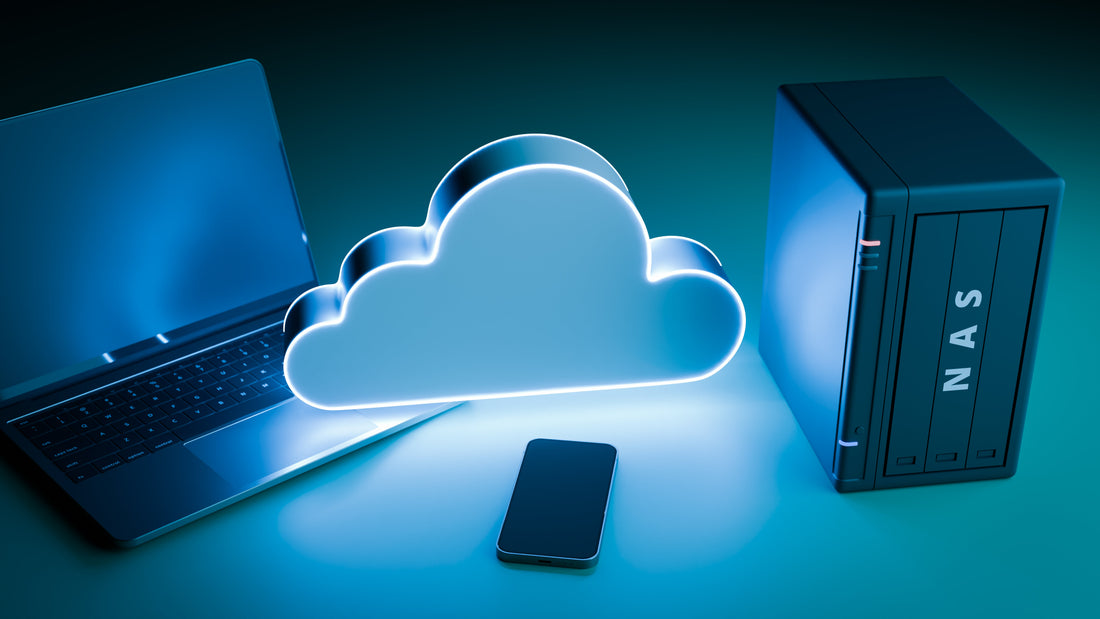
HOW TO SETUP YOUR OWN HOME SERVER
Share

A home server is a great way to centrally store data, stream media, and control your smart home.
In this article, you will learn how to set up a home server, what benefits it offers, and what technical aspects you should consider.
What is a home server?
A home server is a central computer in your home network that provides various services. It can serve as a file server, media server, backup solution, or for controlling your smart home. A home server allows you to store data securely in one place and access it from multiple devices. It doesn't have to be a large desktop PC or a server rack; for many purposes, a much smaller device is sufficient.
Benefits of a home server
- Centralized data storage: All important files, photos, and videos are stored in one place and can be accessed from any device in the network.
- Media server: You can stream movies, music, and pictures to various devices.
- Backup solution: A home server can automatically back up your devices, protecting you from data loss.
- Smart home control: Integrate and manage smart home devices through a central platform.
- Independence from cloud services: Your data remains private and under your control.
The right hardware for a home server
Before setting up a home server, you should select the appropriate hardware. There are several options:
- Old desktop PC or laptop: A cost-effective solution for simple tasks.
- NAS system: Specifically designed for data storage and media streaming.
- Mini-PCs or Raspberry Pi: Energy-efficient and ideal for smaller server projects.
- Custom-built server: Maximum flexibility with individually assembled hardware.
Choosing the right operating system
Depending on the intended use, various operating systems are available:
- Windows Server: Ideal for users who want a familiar environment with extensive administrative options.
- Linux (Ubuntu Server, Debian, CentOS): Free, flexible, and secure. Well-suited for advanced users.
- TrueNAS or OpenMediaVault: Specifically designed for file servers.
- Proxmox: Enables virtualization, allowing multiple server services to run simultaneously.
Which operating system is suitable for which purpose?
- File server: TrueNAS, OpenMediaVault, Ubuntu Server
- Media server: Ubuntu Server with Plex or Jellyfin
- Virtualization: Proxmox or VMware ESXi
- Smart home hub: Raspberry Pi OS or Debian with Home Assistant
- Personal cloud: Nextcloud on Ubuntu Server
However, with some pre-built solutions, you may not have control over the installed operating system.
Software solutions for home servers
A home server can be used for various applications. Here are some examples with the appropriate software:
- File server: Nextcloud, Samba, NFS
- Media server: Plex, Jellyfin, Emby
- Backup solution: UrBackup, BorgBackup, Duplicati
- Smart home control: Home Assistant, openHAB, ioBroker
- Web server: Apache, Nginx
- Virtual machines: Proxmox, VirtualBox, VMware ESXi
- VPN server: WireGuard, OpenVPN
Steps to set up a home server
- Prepare the hardware – Choose suitable components or a used PC.
- Install the operating system – Decide between Windows Server, Linux, or a NAS distribution.
- Set up the network – Assign a static IP address to the server. Use a high-speed Ethernet cable.
- Configure services – Install and set up software for file sharing, media streaming, or other tasks.
- Ensure security – Enable the firewall, perform regular updates, and set up a VPN if necessary.
Important security measures
A home server that is always online is an attractive target for cyberattacks. Therefore, you should take the following precautions:
- Regular updates: Keep the operating system and software up to date.
- Firewall and antivirus protection: Protect the server from attacks.
- Set up a VPN: Increase security when accessing from outside.
- Use strong passwords: Use secure credentials and enable two-factor authentication.
Frequently asked questions
What is the difference between a NAS and a server?
Technically, both are types of home servers. However, a NAS (Network Attached Storage) is specifically designed for data storage or as a media server and offers easy management. A "real" server, on the other hand, is more flexible and can run various services.
Can I use my old PC as a home server?
Yes, an old PC can be used as a home server. However, keep in mind that it may consume more power than server hardware optimized for continuous operation. Also, some very old PCs only have slow Ethernet ports – if possible, replace the network adapter and use a high-speed network cable.
When is a home server worth it?
A home server is worth it if you need to centrally store large amounts of data, stream media, or manage your smart home.
Can I run my own cloud on a home server?
Yes, with software like Nextcloud, you can set up your own cloud.
Conclusion
A home server is a versatile and useful addition to any home network. Those who take the time to set up and maintain a home server regularly can enjoy many benefits – independent of commercial cloud services and with maximum control over their own data.
